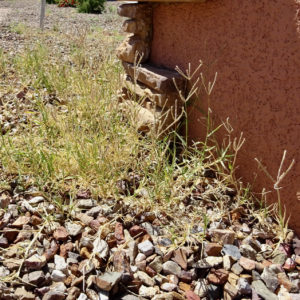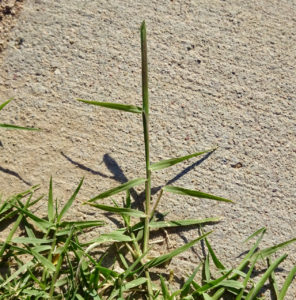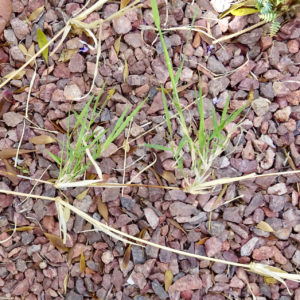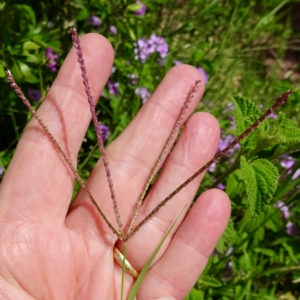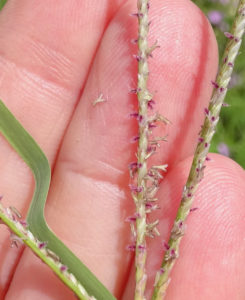Bermuda Grass
Cynodon dactylon
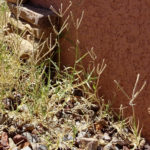
About the Plant
Bermuda grass is used as a perennial lawn grass in the southern United States, where it survives hot summers but goes dormant and brown if winters are cold. Native to eastern Africa, it is also considered a weed whenever it escapes from the lawn into gardens and other areas. Running stolons and rhizomes help this grass spread widely, great if you are using it in the lawn, bad if you are trying to keep it under control. This website considers Bermuda grass an unwanted plant (a weed). If you want to use Bermuda grass as a lawn, please contact the Cooperative Extension Service in your state for information on how to grow this grass successfully.
Bermuda grass is most likely to be confused with crabgrass (Digitaria species), non-native annual grasses usually considered to be weeds. To determine if your grass is Bermuda grass, look for (please see photos to right):
- pointed leaves shaped like a narrow, elongated triangle
- stolons that run along the ground (as an annual, crabgrass has no stolons)
- "fingers" of flowers all connected to the same point on the flower stalk (in crabgrass, the "fingers" are connected at different points on the flower stalk.
Notes:
- Some varieties of Bermuda grass are hybrids and do not produce viable seed.
- Bermuda grass that is allowed to flower produces pollen to which some people are allergic. Some varieties do not produce pollen.
- Bermuda grass needs full sun so areas in shade are much less likely to be invaded by this grass.
Bermuda grass can be hard to control. Try to get it before the infestation is large. Be persistent - doing one thing once will probably not control this weed. You can find information on different methods of control at these websites:
More Information
Map of distribution in US (light blue indicates species is present and not native; pink indicates species is considered noxious)
Information on ecology and botany from Bugwood Wiki
Technical botanical description from SEINet
ID Characteristics
Bermuda grass is a perennial that spreads by seeds, rhizomes, and stolons. It creeps along the ground, sending up flower stalks from about May to October in Arizona. Bermuda grass grows best when temperatures are above 75 degrees F and will stay green in winter in frost-free regions.
The leaves of Bermuda grass are alternate, long and narrow with a pointed tip and up to about 2.5 inches long.
The stolons of Bermuda grass are often quite obvious, white and dry looking, with tufts of leaves emerging from each node. These stolons can root at the nodes, creating new plants. Short sections of stolon can survive for several days if cut from the mother plant, one reason this plant can pop up in unexpected places.
The inflorescence of Bermuda grass is a panicle made of several branches ("fingers"), each containing several flowers. The flower stalk can be only a few inches high if the plant is grown in a dry spot; up to 18 inches high if moisture is ample. There are usually 4-6 branches (though as few as 2 and as many as 9 are possible) all connected together at a single point on the flower stalk. Each branch can be 2.5 inches long, though may be shorter if moisture is limited.
Bermuda grass has typical grass flowers optimized for wind pollination. In the photo above, the dangly pale green structures are the anthers; the purplish, feathery structures are the stigmas of the female flower which accept the pollen.
